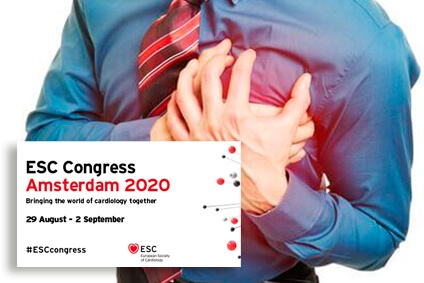The new European guidelines on NON-ST-segment elevation acute coronary syndromes (NSTE ACS) were presented virtually during the European Society of Cardiology 2020 Congress (ESC 2020) and published in Eur Heart J.

This document includes news regarding a more agile infarction diagnosis, the use of non-invasive imaging, the simplification of anticoagulant therapy, infarction with normal coronary arteries, etc.
After 5 years without news and much information to add, European guidelines were finally updated with new concepts and rethinks related to diagnosis and patient management.
First, there is a new algorithm for the diagnosis of suspected NSTE ACS, emphasizing the use of high-sensitivity troponin, which was not as widely available at the time of the 2015 version of these guidelines.
The high-sensitivity troponin analysis must be conducted within 1 hour of admission in all patients with suspected NSTE ACS, so as to rule in or rule out a diagnosis within 2 hours.
Read also: ESC 2020 | Revascularization Strategies: Ventricular Dysfunction Might Tilt the Scales.
Another key aspect is the inclusion of the use of noninvasive imaging in low-risk patients. CT angiography can avoid conventional coronary angiography in up to 30% of cases.
CT angiography is now a class IA recommendation as an alternative to conventional coronary angiography to exclude a diagnosis of acute coronary syndrome in patients with a low-to-intermediate likelihood of coronary artery disease, besides high-sensitive troponin or ECG results that are normal or inconclusive.
The third novelty is an emphasis on patient risk stratification for fastest care. While prior versions featured 4 risk groups, now there have been reduced and simplified to 3.
- Very high risk: patients who must be in the cath lab within 2 hours. These are patients with hemodynamic instability, shock, recurrent/refractory chest pain despite maximum medical therapy, life-threatening arrhythmias, mechanical complications, acute heart failure, and ST-segment depression >1 mm/6 leads plus ST-segment elevation aVr and/or V1.
- High risk: patients who need invasive management within 24 hours During this time, a CT angiography can be an alternative to avoid a future coronary angiography. Criteria are dynamic ST-T-segment changes (symptomatic or silent), GRACE risk score >140, and resuscitated cardiac arrest WITHOUT ST-segment elevation or cardiogenic shock.
- Low risk: patients who lack any of the above criteria, for whom invasive management can be selective.
Another novelty is related to the timing of antithrombotic treatment. Guidelines suggest avoiding pretreatment when an invasive strategy has been planned. This is aimed at preventing potent antiplatelet therapy in patients for whom coronary anatomy is still unknown.
Finally, the document adds special sections focusing on patients with infarction with nonobstructive coronary arteries (MINOCA), spontaneous coronary artery dissection, and postdischarge care.
guias-ESC-NSTEMI-fullOriginal Title: 2020 ESC guidelines for the management of acute coronary syndromes in patients presenting without persistent ST-segment elevation.
Reference: Collet J-P et al. Eur Heart J. 2020; Epub ahead of print y presentadas en forma virtual en el ESC 2020.
Get the latest scientific articles on interventional cardiologySubscribe to our weekly newsletter
We are interested in your opinion. Please, leave your comments, thoughts, questions, etc., below. They will be most welcome.





